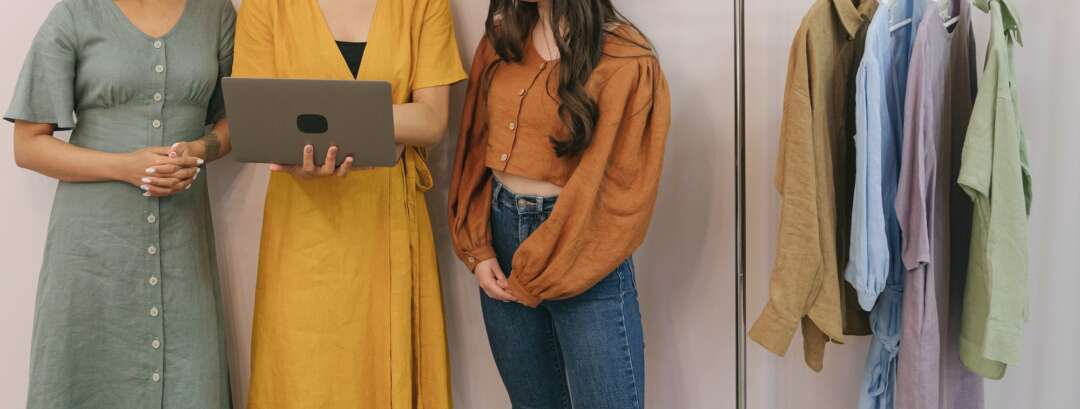Collaborative post
6 Sustainable Fashion Trends You Should Know About in 2023
In the past couple of decades, fast fashion trends dominated the industry and brought about the rise of
cheap, but low-quality clothing items. Many brands targeted fashionistas who couldn’t get enough of
hyper-trendy clothing and needed a quick scratch for their fashion itch. But while mass production and
mass consumption of clothing has drastically reduced costs for consumers, the contemporary fashion
world has been put on the spot for contributing as much as 10 percent of global carbon emissions.
Fortunately, the tide has since turned in the fashion industry. New generations of eco-conscious
consumers and fashionistas have high stakes in the market, and sustainable and ethical fashion trends
are now en vogue. In fact, the sustainable fashion market is expected to grow from USD 7.5 billion in
2022 to USD 16.8 billion in 2032, with an annual growth rate of 8.6 percent. It’s an encouraging sign that
consumers are increasingly choosing more sustainable options when it comes to their fashion.
If you’re someone who loves fashion but also cares about the environment, here are the sustainable
fashion trends that should be on your radar this 2023:
1) Quality Over Quantity
One of the most powerful trends of today’s sustainable fashion movement is mindful, slow, and
conscious consumption. Sustainable fashion advocates champion quality over quantity. Instead of
purchasing a dozen cheaply made garments, the goal is to invest in a few high-quality pieces that are
highly usable and built to last.
Consumers are aware that high-quality pieces are often designed with durability in mind, ensuring they
withstand numerous wears. A customer who values sustainability will, for example, forgo a pair of
leggings that are thin and ill-fitting and instead go for premium women’s leggings with sturdier fabric
and a superb fit.
2) The Rise of Resale Clothing Websites
Before the internet, families put up garage sales in front of their homes to sell their secondhand
belongings, including clothes. These days, it’s easy for consumers to open accounts on various platforms
to sell clothing online and make sure it goes to people who’ll appreciate the pieces more.
Consumers can choose from a variety of resale clothing websites to exchange secondhand fashion items
to both national and international audiences. Ultimately, this trend not only saves participants money,
but also reduces the number of clothes being sent to the landfill.
3) The Resurgence of Vintage Clothing
Vintage fashion is back in style, and it’s not going anywhere anytime soon. After all, what’s more chic
and sustainable than sporting a long-lived piece of history and looking great in it several decades after it
was made? Vintage clothing carries a unique charm and timeless appeal that can’t easily be replicated
by fast fashion items.
If you’re interested in this trend, before checking out the many vintage shops online and offline, you can
start by looking into your mother’s or grandmother’s wardrobe. Hunt for interesting pieces from bygone
eras, and see if you can give them new life with some clothing repair and by wearing updated
accessories with them.
4) Clothing from Recycled Materials
A number of sustainable fashion brands now also make use of recycled materials for their clothing
production. Fashion designers are getting creative with what people are quick to think of as waste,
turning it into wearable art. Recycled plastics and discarded textiles are swiftly finding their way into
clothing collections, and there’s even a movement to make clothing out of recycled materials collected
from the ocean.
You’ll contribute to a more circular fashion economy by choosing fashion made from recycled materials.
Why not try wearing polyester jackets made from recycled plastic bottles and other clothes that
incorporate upcycled fabrics? These innovative materials not only reduce waste, but also help lower the
overall carbon footprint of the fashion industry.
5) Biodegradable Fashion
Biodegradable fashion materials break down naturally, leaving no trace of pollution or waste behind.
Cotton and linen are some examples of biodegradable fabrics that have been popular for centuries, but
were superseded by polyester, a form of plastic that’s non-biodegradable and cheaper to produce.
Contemporary fashion brands now increasingly favor organic cotton and linen for their sustainable
product lines.
What’s more, innovative designers are experimenting with new materials like mushroom leather or
mycelium and algae-based fabrics, creating even more eco-friendly alternatives to traditional textiles.
6) Fashion Rental
The concept of renting clothing is gaining traction as a sustainable alternative to buying new pieces.
There are several fashion rental websites that will allow consumers access to designer clothing and
outfits for special occasions, all without the commitment of ownership.
Renting clothing is not only cost-effective, but also reduces the demand for new production. It’s the
smarter choice for an eco-conscious customer who wants to shrink their fashion footprint while still
enjoying a diverse wardrobe. The next time you have a special event or simply want to try out a new
style, consider renting instead of buying.
Ultimately, sustainable fashion is no longer just a niche movement—it’s one that’s reshaping the
industry permanently. Its success lies in the fact that it offers an ethical and eco-friendly approach to
clothing consumption that also still allows for fashionable expression. Now’s the best time for you to get
into the world of eco-chic fashion, showing the world that sustainability is the ultimate fashion
statement.


